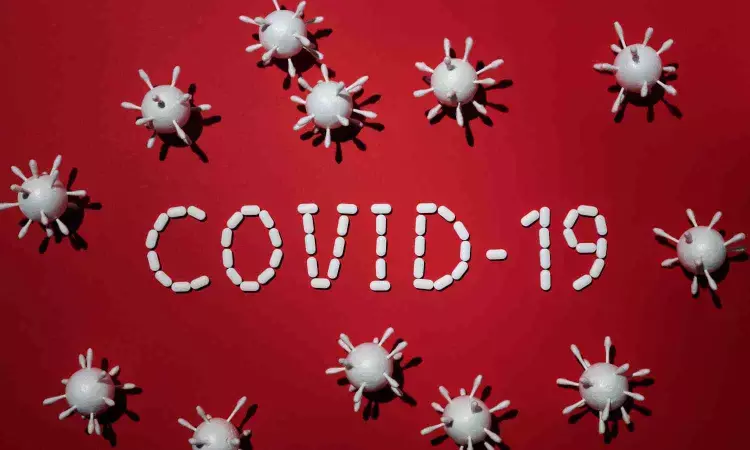- Home
- Medical news & Guidelines
- Anesthesiology
- Cardiology and CTVS
- Critical Care
- Dentistry
- Dermatology
- Diabetes and Endocrinology
- ENT
- Gastroenterology
- Medicine
- Nephrology
- Neurology
- Obstretics-Gynaecology
- Oncology
- Ophthalmology
- Orthopaedics
- Pediatrics-Neonatology
- Psychiatry
- Pulmonology
- Radiology
- Surgery
- Urology
- Laboratory Medicine
- Diet
- Nursing
- Paramedical
- Physiotherapy
- Health news
- Fact Check
- Bone Health Fact Check
- Brain Health Fact Check
- Cancer Related Fact Check
- Child Care Fact Check
- Dental and oral health fact check
- Diabetes and metabolic health fact check
- Diet and Nutrition Fact Check
- Eye and ENT Care Fact Check
- Fitness fact check
- Gut health fact check
- Heart health fact check
- Kidney health fact check
- Medical education fact check
- Men's health fact check
- Respiratory fact check
- Skin and hair care fact check
- Vaccine and Immunization fact check
- Women's health fact check
- AYUSH
- State News
- Andaman and Nicobar Islands
- Andhra Pradesh
- Arunachal Pradesh
- Assam
- Bihar
- Chandigarh
- Chattisgarh
- Dadra and Nagar Haveli
- Daman and Diu
- Delhi
- Goa
- Gujarat
- Haryana
- Himachal Pradesh
- Jammu & Kashmir
- Jharkhand
- Karnataka
- Kerala
- Ladakh
- Lakshadweep
- Madhya Pradesh
- Maharashtra
- Manipur
- Meghalaya
- Mizoram
- Nagaland
- Odisha
- Puducherry
- Punjab
- Rajasthan
- Sikkim
- Tamil Nadu
- Telangana
- Tripura
- Uttar Pradesh
- Uttrakhand
- West Bengal
- Medical Education
- Industry
Increased Risk of GI Symptoms in Children with COVID-19: JAMA

Findings of a new Study suggest that children with documented SARS-CoV-2 infection face a higher risk of gastrointestinal (GI) tract symptoms compared to those without the infection.
The profile of gastrointestinal (GI) tract outcomes associated with the postacute and chronic phases of COVID-19 in children and adolescents remains unclear. A study was done to investigate the risks of GI tract symptoms and disorders during the postacute (28-179 days after documented SARS-CoV-2 infection) and the chronic (180-729 days after documented SARS-CoV-2 infection) phases of COVID-19 in the pediatric population.
This retrospective cohort study was performed from March 1, 2020, to September 1, 2023, at 29 US health care institutions. Participants included pediatric patients 18 years or younger with at least 6 months of follow-up. Data analysis was conducted from November 1, 2023, to February 29, 2024. Presence or absence of documented SARS-CoV-2 infection. Documented SARS-CoV-2 infection included positive results of polymerase chain reaction analysis, serological tests, or antigen tests for SARS-CoV-2 or diagnosis codes for COVID-19 and postacute sequelae of SARS-CoV-2. GI tract symptoms and disorders were identified by diagnostic codes in the postacute and chronic phases following documented SARS-CoV-2 infection.
The adjusted risk ratios (ARRs) and 95% CI were determined using a stratified Poisson regression model, with strata computed based on the propensity score. Results: The cohort consisted of 1 576 933 pediatric patients (mean [SD] age, 7.3 [5.7] years; 820 315 [52.0%] male). Of these, 413 455 patients had documented SARS-CoV-2 infection and 1 163 478 did not; 157 800 (13.6%) of those without documented SARS-CoV-2 infection had a complex chronic condition per the Pediatric Medical Complexity Algorithm. Patients with a documented SARS-CoV-2 infection had an increased risk of developing at least 1 GI tract symptom or disorder in both the postacute (8.64% vs 6.85%; ARR, 1.25; 95% CI, 1.24-1.27) and chronic (12.60% vs 9.47%; ARR, 1.28; 95% CI, 1.26-1.30) phases compared with patients without a documented infection.
Specifically, the risk of abdominal pain was higher in COVID-19-positive patients during the postacute (2.54% vs 2.06%; ARR, 1.14; 95% CI, 1.11-1.17) and chronic (4.57% vs 3.40%; ARR, 1.24; 95% CI, 1.22-1.27) phases. In this cohort study, the increased risk of GI tract symptoms and disorders was associated with the documented SARS-CoV-2 infection in children or adolescents during the postacute or chronic phase. Clinicians should note that lingering GI tract symptoms may be more common in children after documented SARS-CoV-2 infection than in those without documented infection.
Reference:
Zhang D, Stein R, Lu Y, Zhou T, Lei Y, Li L, Chen J, Arnold J, Becich MJ, Chrischilles EA, Chuang CH, Christakis DA, Fort D, Geary CR, Hornig M, Kaushal R, Liebovitz DM, Mosa ASM, Morizono H, Mirhaji P, Dotson JL, Pulgarin C, Sills MR, Suresh S, Williams DA, Baldassano RN, Forrest CB, Chen Y; Researching COVID to Enhance Recovery (RECOVER) Initiative. Pediatric Gastrointestinal Tract Outcomes During the Postacute Phase of COVID-19. JAMA Netw Open. 2025 Feb 3;8(2):e2458366. doi: 10.1001/jamanetworkopen.2024.58366. PMID: 39918822; PMCID: PMC11806396.
Dr. Shravani Dali has completed her BDS from Pravara institute of medical sciences, loni. Following which she extensively worked in the healthcare sector for 2+ years. She has been actively involved in writing blogs in field of health and wellness. Currently she is pursuing her Masters of public health-health administration from Tata institute of social sciences. She can be contacted at editorial@medicaldialogues.in.
Dr Kamal Kant Kohli-MBBS, DTCD- a chest specialist with more than 30 years of practice and a flair for writing clinical articles, Dr Kamal Kant Kohli joined Medical Dialogues as a Chief Editor of Medical News. Besides writing articles, as an editor, he proofreads and verifies all the medical content published on Medical Dialogues including those coming from journals, studies,medical conferences,guidelines etc. Email: drkohli@medicaldialogues.in. Contact no. 011-43720751


